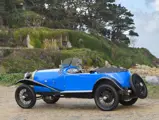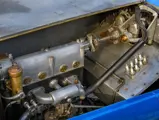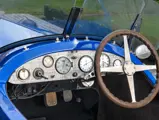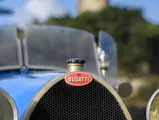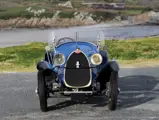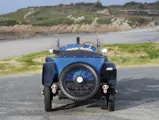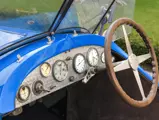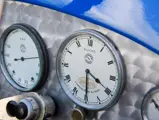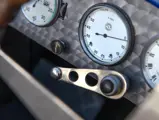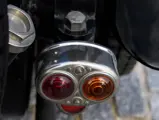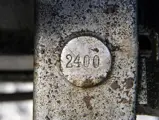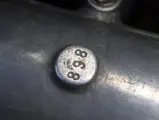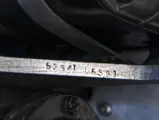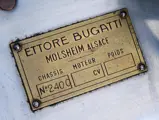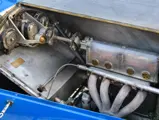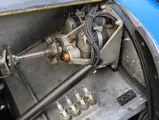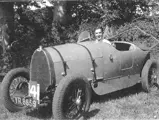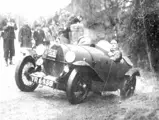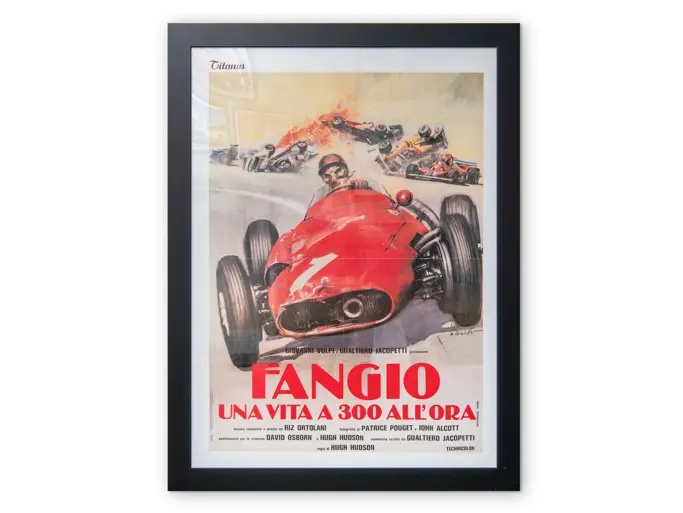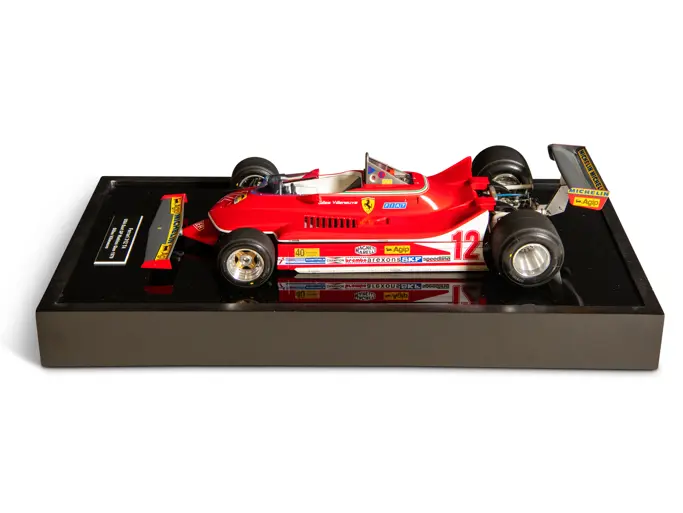Paris 2020
1925 Bugatti Type 23
{{lr.item.text}}
€350,000 - €375,000 EUR | Not Sold
 | Paris, France
| Paris, France
{{internetCurrentBid}}
{{internetTimeLeft}}

- Raced in hill-climb events in Ireland from the 1930s through the early 1970s
- Owned and restored during the mid-1970s by marque historian Hugh Conway
- Restoration featured in three issues of Bugantics
- Known and exceptionally well documented
- Accompanied by a report from David Sewell
- Highly genuine example of the rare and desirable Brescia tourer
- Engagée dans des courses de côte en Irlande, depuis les années 1930 jusqu'au début des années 1970
- Restaurée au milieu des années 1970 par son propriétaire, l'historien de la marque Hugh Conway
- Restauration mentionnée dans trois numéros de Bugantics
- Connue et exceptionnellement bien documentée
- Munie d'un rapport rédigé par David Sewell
- Exemplaire fortement authentique de la séduisante et rare Brescia
Veuillez noter que le certificat d'immatriculation britannique V5C a été demandé et qu'il est attendu pour une date postérieure à la vente.
After Bugatti’s Type 13 captured the top four places at the 1921 Brescia Grand Prix, the Molsheim factory received unprecedented sales orders. The four-valve models were subsequently named after Brescia, including a more comfortably appointed version dubbed the Type 23 Brescia Tourer. The Type 23 was the world’s first multi-valve model to enjoy full series production, and it remains a highly collectable component of marque history.
Internally recorded as Bugatti Works order no. 33, this impressive Type 23 was equipped with a twin magneto and clothed in blue fabric coachwork by Lavocat & Marsaud. Chassis no. 2400 was distributed to Bugatti’s Paris showroom in May 1925 and subsequently delivered to London, where it was registered in December 1926 as ‘YR 8859’. TL Gordon, the manager for Lord Harewood’s Irish estate, owned the car through 1933, when it passed to Wilford Fitzsimmons of Dublin, the competition secretary of the Royal Irish Automobile Club.
Fitzsimmons raced the Brescia regularly (including the 1934 Boxing Day Trial and the 1936 Kilternan hill climb), as did subsequent owner Dr Brian Boydell, a fellow Dubliner who owned the car from 1937 to 1949. Sold then to Robert Newell, the Bugatti experienced a period of relative ease before resuming a racing life under Freddie Norman in 1954. Norman fitted a Wilson preselector gearbox and a homemade body, selling the car to Northern Ireland’s Brian Nelson in 1956.
Mounted with a second homemade body by Lyndon Kearney, who took possession in 1962, the Bugatti was next acquired in 1974 by famed marque historian and owners’ club VP Hugh Conway, who completely restored it over three years of possession, fitting the current original-style coachwork. The restoration was featured in three issues of Bugantics, becoming the basis for Conway’s respected Brescia Overhaul Manual.
In 1977 the Type 23 passed to Alann Soderstrom of Sweden, where it remained for nearly 20 years. On the breakup of the Soderstrom Collection in 1996, Bill Clarke of Northern Ireland acquired the car, forty years after his first attempt. During his ownership a complete professional engine rebuild was carried out. The car has benefitted from a new Brineton crankshaft, new Carillo rods, pistons, bearings and tappet blocks. The brakes have been relined and the brake cams and housings reconditioned. The car has been fitted with indicators, brake lights, and hazard warning lights for modern traffic conditions. This has been carried out in a way so as not to detract from the period appearance. Bill also assembled the extremely comprehensive history file, documented with racing programs, period photos, and a factory log record.
The file has been further improved by the current owner, who acquired the car in 2016 and had it completely but sympathetically, cosmetically, and mechanically overhauled by Ivan Dutton Limited. Because of staff illness, the work was actually done by Ivan Dutton himself, although he was theoretically retired. Subsequently it has very successfully taken part in the 2019 International Bugatti Rally in Co. Kerry, Ireland.
The car has been impeccably maintained and has very lively performance. It is a passport for entry into the renowned annual Brescia Solo meeting. This is a rare opportunity to acquire a genuine Brescia with its original engine and a continuous history.
Après que la Bugatti Type 13 eut raflé les quatre premières places au Grand Prix de Brescia 1921, l'usine de Molsheim reçut une quantité de commandes sans précédent. Ses modèles à quatre soupapes prirent le nom de Brescia, y compris une version plus confortablement équipée qui fut nommée Tourer Type 23 Brescia. Le Type 23 était la première quatre-soupapes de série au monde, et elle représente un jalon dans l'histoire de la marque qui fait clairement d'elle un objet de collection.
Cette impressionnante Type 23 est enregistrée en interne comme la commande Bugatti n° 33 ; elle était équipée d'une magnéto double et fut habillée par Lavocat & Marsaud d'une carrosserie en tissu bleu. Le châssis 2400 fut expédié en mai 1925 au magasin d'exposition Bugatti de Paris puis livré à Londres où il fut immatriculé en décembre 1926 sous le numéro YR 8859. TL Gordon, l'intendant du domaine irlandais de Lord Harewood, la posséda jusqu'en 1933, date à laquelle elle fut achetée par Wilford Fitzsimmons, de Dublin, le secrétaire sportif du Royal Irish Automobile Club.
Fitzsimmons courut régulièrement sur la Brescia, entre autres lors du Boxing Day Trial 1934 et de la course de côte de Kilternan 1936. Son propriétaire suivant, le Dr Brian Boydell, un autre Dublinois qui la posséda de 1937 à 1949, fit de même. Elle fut ensuite vendue à Robert Newell, auprès duquel elle connut une période plutôt confortable, avant qu'en 1954 Freddie Norman ne mît un terme à sa vie sportive. Ce dernier installa une boîte Wilson à présélection et une carrosserie artisanale, puis la vendit en 1956 à Brian Nelson, un Nord-Irlandais.
Après l'avoir achetée en 1962, Lyndon Kearney l'équipa d'une deuxième carrosserie artisanale puis la vendit en 1974 à Hugh Conway, le célèbre historien de la marque et vice-président du club des propriétaires de Bugatti, qui la restaura complètement pendant les trois années où il la conserva, et la dota de son actuelle carrosserie dans le style de l'originale. Cette restauration fut mentionnée dans trois numéros de Bugantics et devint la matière première du Manuel de restauration des Brescia, l'ouvrage reconnu de Conway.
En 1977, la Type 23 fut acquise par Alann Soderstrom, un Suédois, qui la conserva près de vingt ans dans son pays. Lors de la dispersion de la Collection Soderstrom, en 1996, un Nord-Irlandais, Bill Clarke, l'acheta, quarante ans après avoir une première fois essayé de le faire. Sous sa garde, le moteur bénéficia d'une réfection complète menée par des professionnels qui l'équipèrent d'un nouveau vilebrequin Brineton, de bielles, de pistons, de paliers et de poussoirs tous nouveaux, de fourniture Carillo. Les freins furent rectifiés et leurs cames et leurs logements révisés. La voiture reçut des clignotants, des feux stop et des warnings adaptés aux conditions de circulation actuelles mais ne trahissant pas son allure d'origine. Bill constitua par ailleurs un historique extrêmement complet, comprenant des programmes de courses, des photos d'époque et un dossier d'usine.
Cet historique a été enrichi par le propriétaire actuel, qui a acquis la voiture en 2016 et l'a fait remettre à niveau esthétiquement et mécaniquement par Ivan Dutton Limited, de façon complète mais respectueuse. Certains de ses collaborateurs étant malades, c'est Ivan Dutton lui-même qui a fait le travail, alors qu'il était en principe à la retraite. Par la suite, la voiture a pris part avec succès en 2019 à l'International Bugatti Rally du Comté de Kerry, en Irlande.
Cette voiture a été entretenue de façon irréprochable et offre des performances très affirmées. Elle représente un passeport d'accès au célèbre meeting annuel Brescia Solo. Nous avons ici une occasion rare d'acquérir une véritable Brescia au moteur d'origine et à l'historique connu de façon continue.


